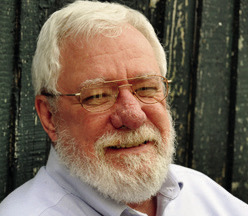Bradshaw
Many people know that the Union Sulphur Company made a huge fortune from a rich deposit in Calcasieu Parish in the early 1900s and became the leading producer in the world. It is not as well known that the company operated a fleet of ships to haul that sulphur, including one that sailed quietly away from the company’s docks at the tip of Cameron Parish and was never seen again.
That ship was the S.S. Hewitt. When it was launched in 1914, it was described as “one of the largest bulk cargo carriers constructed in the United States.” Union Sulphur bought it from the J. S. Emery Steamship Company of Boston in 1915 and renamed it for Abram Hewitt, one of the company’s investors. It was commandeered by the government in 1918 for use in World War I and was the first U.S. merchant vessel fitted with a gun to defend against submarines.
When it was returned to the company, unscathed by the war, it went back to business hauling sulphur from the Union Sulphur docks at Sabine Pass until, on January 26, 1921, it simply disappeared.
There were no worries when the Hewitt sailed on January 20, commanded by Hans Jakob Hansen, one of the company’s most experienced captains. It was to make a routine trip along an established route to haul a load of sulphur to Portland, Maine. There were no indications of anything going wrong, until something - nobody knows to this day what - apparently did.

Bradshaw
J. R. Gordon, who managed the Union Sulphur ships, officially reported the disappearance in a letter in April 1921 to Lloyd’s Registry of Shipping, the agency that monitors merchant ships for insurers. He said he had no idea what happened but that the ship was surely gone, with no trace of it or its 30man crew.
“We are at a loss to account for her disappearance as the steamer was equipped with a powerful wireless set and there had been no indication of any trouble whatever of any description,” he wrote. He said it was standard policy for the captain to call in daily by radio, giving the ship’s position and reporting anything out of the ordinary. It was an uneventful and routine trip as the ship crossed the Gulf, rounded Florida, and began steaming north up the Atlantic coast.
“We received radio messages every day from her, giving her position from the day she left Sabine until her disappearance,” Gordon wrote. “Her last message was received on the morning of January 26, giving her position at 7 PM on January 25th, as being 222 miles North of Jupiter (a point on the Florida coast).”
Gordon was not unduly alarmed when the daily radio messages stopped. Weather conditions sometimes interfered with transmission. But he and other company officials began to worry when the Hewitt didn’t arrive for a scheduled stop in Boston. They asked naval stations along the Atlantic coast to try to contact the Hewitt by radio and for ships traveling near its usual course to look for it. When nobody saw or heard anything, another of the company’s steamers was sent to zigzag over the Hewitt’s course. It found no trace.
Mechanical breakdown was unlikely. Gordon said the boat had just been completely overhauled and certified as fully seaworthy by U.S. maritime authorities. Something totally unexpected must have happened, he said.
Speculators began to see something nefarious when, only days after the Hewitt’s disappearance, the battered hulk of the schooner Carroll A. Deering was found on shoals off the North Carolina coast with no sign of its crew. A British insurance company suggested that the Hewitt and the Deering may have run into each other, but the damage to the Deering didn’t look like it had been caused by a collision.
Fueling more speculation, the loss of the Hewitt and the Deering happened in an area where in 1918 the USS Cyclops disappeared without a trace. The three baffling incidents caused a raft of conspiracy theories and led to investigations by five federal agencies.
None of the disappearances have ever been explained, causing them to become part of the legend of the infamous Bermuda Triangle between Florida and Bermuda in the Atlantic. That legend took firm hold in the 1950s, when several newspapers and magazines claimed there was an unprecedented loss of airplanes and ships in the triangle after World War II.
Investigators say the triangle has heavy ship and airplane traffic and that there’s never been any evidence that it is any more dangerous than anywhere else. Nonetheless, there are still doubters who think the Hewitt, Deering, Cyclops, and a dozen other ships and planes have fallen prey to something other than the law of averages.
You can contact Jim Bradshaw at [email protected] or P.O. Box 1121, Washington LA 70589.

